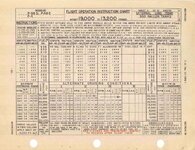... beyond the machines eventually used for training, of course. Uses 'normal' V-1710s, like for example the -33 (as on the Lightning I and long-nose P-40s), -39 (short-nose P-40s etc.), -73 (P-40K), - 81 (P-40N etc.), and, for a god measure, 2-stage V-1710s after 1943.
Obviously not much of a fighter beyond 15-20k ft vs. the Luftwaffe's best, but it should be very useful in Asia/Pacific, and as a fighter-bomber. The non-turbo machine is to be manufactured by another source, not Lochkeed Burbank.
Any takers?
Obviously not much of a fighter beyond 15-20k ft vs. the Luftwaffe's best, but it should be very useful in Asia/Pacific, and as a fighter-bomber. The non-turbo machine is to be manufactured by another source, not Lochkeed Burbank.
Any takers?

